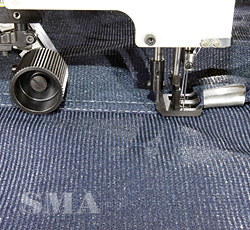Some Facts About Industrial Sewing Machines
by Baylee Dayton Content WriterBrief
History of Sewing
Women
in the generations before our current modern times would spend many hours
making each piece of clothing that was needed for both themselves and their
families. Unless a woman's family was very wealthy and could afford to purchase
already made expensive clothing, every article that they wore was completely
made by hand. Because of the time-consuming effort needed and the already chore
packed days women had, most households had just two or three outfits to wear.
It was during the industrial revolution that this changed though. The
introduction of much faster industrial sewing machines reduced the time it took
to make clothing and other material goods. Factories took over the process of
making clothes and refined it. The ensuing efficiency reduced the cost of
purchasing clothes considerably and reduced the burden on women to sew as much
for their families.
Made
to be Used
The
average household sewing machines are lightweight in comparison with an industrial sewing machine. They are
usually used for brief projects and brought out of the closet just a few times
a year for holiday crafts or maybe making quilts from scrap fabric. Industrial
sewing machines, however, are made to be used on a regular basis. They are
stronger, faster, and sturdier. Built in to a table with some of the mechanical
parts suspended below, they are incredibly efficient. Every industrial sewing machine has a much
larger drive belt and their needles are larger and interchangeable for each
project. Many seamstresses have declared that after using an industrial sewing machine, it is hard
to go back to using a regular household version.
Project
Applications
The potential uses of industrial sewing machines are incredible. Their powerful motors and drive belts allow for unique sewing applications. The pressure foot raises and lowers such that much thicker fabrics can be fed through without damaging the machines as it might be a lightweight sewing machine. This allows them to be used for not only making things like clothing out of heavy denim but also other items such as heavy curtains and large upholstery cushions. Also, seams often do not have to be pinned together with an industrial sewing machine because of their specialized walking foot that holds fabric firmly together. Material can also be turned more easily with the unique walking foot and feed dog as well which means intricate sewing details can be accomplished without bunching.

Industries
That Use Industrial Sewing Machines
Efficient, powerful industrial sewing machines are larger than household versions and can accomplish tasks much more quickly. Because of this, they cost several times more but last a lot longer with proper maintenance. Fashion industries use them for producing bulk clothing in a short period that costs significantly less because of the reduced time it takes to sew each piece together. Automotive industries use industrial sewing machines for making seat covers and cushions for vehicles. Home interior companies use them for making beautiful thick coverlets and blankets for bedding as well as gorgeous drapery and pillows. They are also used by toy manufactures to sew tiny dresses for dolls and fluffy, stuffed animals that children love. Sometimes, seamstresses with home based businesses also purchase them. And, Sewing Machine Australia is the one-stop destination for anyone looking for industrial sewing machine.
Sponsor Ads
Created on Dec 31st 1969 18:00. Viewed 0 times.



